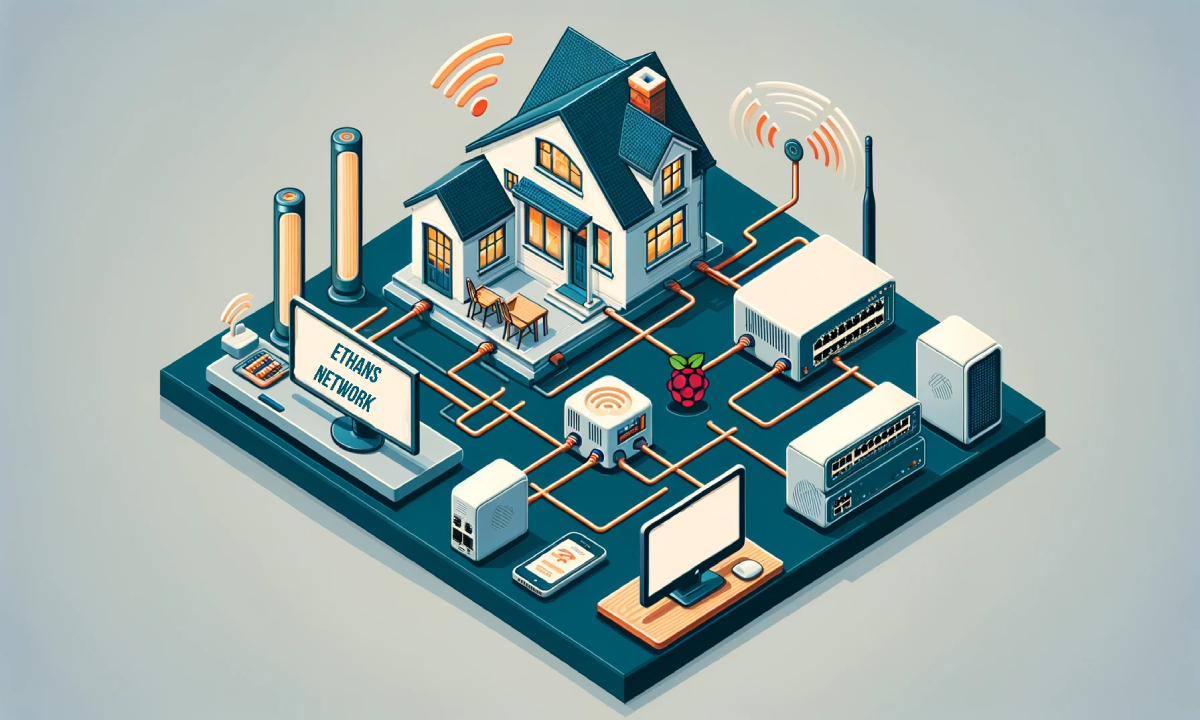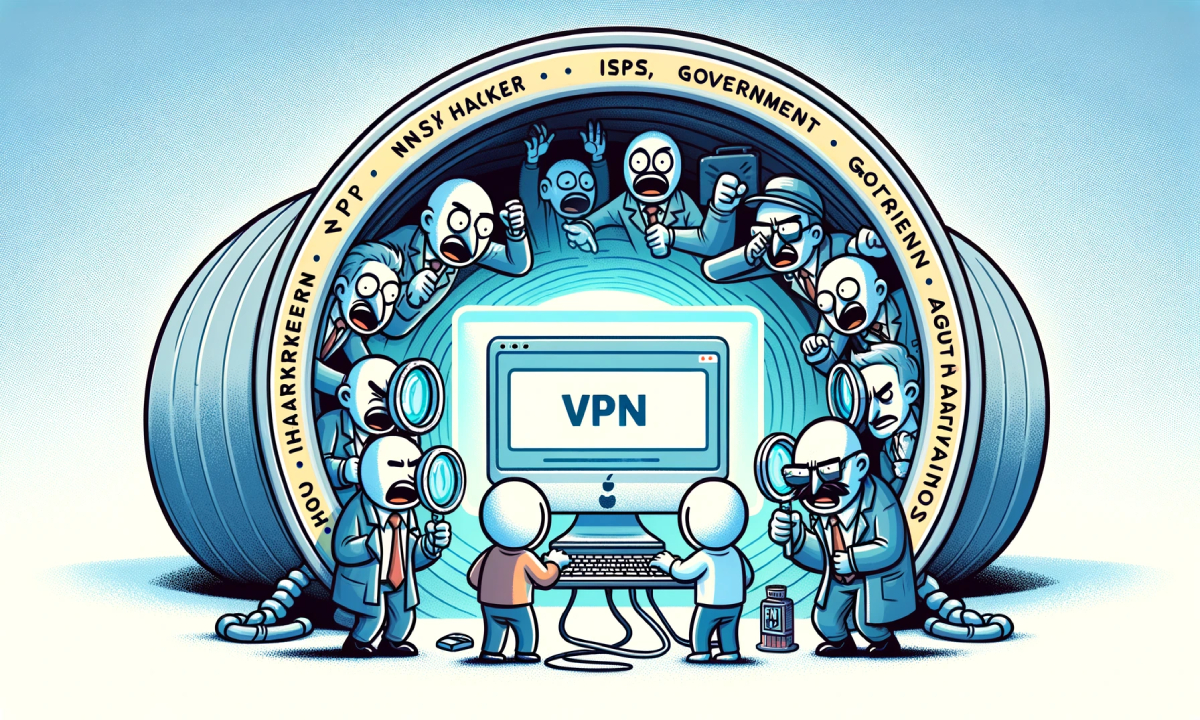Building a Home Network: Tips for Reliable Connectivity

In today's digital age, a home network is the backbone of our connected lives. Whether it's remote work, online education, streaming movies, or gaming, we rely heavily on a strong and reliable network. Building a robust home network isn't just about having the latest technology; it's about understanding the fundamentals, choosing the right hardware, securing your network, and optimizing for performance. In this guide, we'll explore these essential aspects and provide you with tips to ensure your home network delivers reliable connectivity.
Understanding the Basics
Before delving into the tips, let's start with the basics of a home network:
- Router: The router is the central device that connects all your devices to the internet. It directs data traffic between your devices and the internet.
- Modem: The modem is responsible for converting the data from your internet service provider (ISP) into a format that your router can use.
- Switch: A switch is used to expand the number of wired connections available on your network. It's especially useful if you have multiple devices in one location.
- Access Points: Access points extend the coverage of your Wi-Fi network. In larger homes, they ensure that Wi-Fi signals reach every corner.
Choosing the Right Hardware
The foundation of a reliable home network lies in your choice of hardware. Here's what you need to consider:
- Router Selection: When selecting a router, take into account your internet speed and the number of devices connected. Look for a router that matches your internet plan's speed, and consider one that supports the latest Wi-Fi standards, such as Wi-Fi 6 (802.11ax) for faster and more efficient connections.
- Modem Compatibility: Ensure that your modem is approved by your ISP and is compatible with your chosen internet plan. Compatibility ensures that you can fully utilize your internet speed.
- Additional Devices: Depending on your needs, you might need additional hardware such as switches for wired connections and access points to extend Wi-Fi coverage. Invest in quality devices to avoid bottlenecks in your network. I personally use a NAS for personal cloud storage, a rasperry pi as a DNS as well as a Synology Diskstation running docker and services such as Grafana and a VPN service.
Network Planning and Layout
The layout of your network can significantly affect its performance:
- Central Placement: Position your router centrally within your home for even Wi-Fi coverage. Placing it in a central location reduces the chances of dead zones or areas with poor connectivity.
- Avoid Interference: Keep your router away from walls, large appliances, and other electronics that can interfere with Wi-Fi signals. Walls and obstacles can block or weaken Wi-Fi signals, so try to keep the router in an open area.
- Wired Connections: Consider using wired Ethernet connections for devices that don't move, such as desktop computers and gaming consoles. Wired connections are faster and more stable than Wi-Fi.
Securing Your Home Network
Security is paramount when it comes to your home network:
- Strong Passwords: Set strong, unique passwords for your router and Wi-Fi network. Avoid using default passwords, as they are easily guessable by attackers.
- Encryption: Enable WPA3 encryption for your Wi-Fi network. This encryption standard provides robust security and ensures that unauthorized users can't access your network. A VPN is also essential in encrypting your browsing data so that your ISP cannot sell your personal browsing habbits.
- Firmware Updates: Regularly update your router's firmware to patch known vulnerabilities. Outdated firmware can be an entry point for attackers.

Wired vs. Wireless Connections
Understanding when to use wired and wireless connections can help optimize your network:
- Wired Connections: Wired connections are ideal for devices that require consistent, high-speed connections, such as gaming consoles and desktop computers. They are less susceptible to interference and are generally more reliable.
- Wireless Connections: Wireless connections are convenient for mobile devices like smartphones, tablets, and laptops. However, they can be slower and less stable than wired connections, especially if you have many devices connected simultaneously.
Quality of Service (QoS)
Quality of Service (QoS) settings in your router can help optimize your network's performance. Consider segmenting your network for improved security and performance:
- IoT Devices: Create a separate network for Internet of Things (IoT) devices. These devices, such as smart thermostats and security cameras, may have security vulnerabilities, so isolating them from your main network can prevent potential threats.
- Guest Network: Set up a guest network for visitors. This network should have limited access to your main network and its devices, enhancing security.
- Traffic Prioritization: QoS allows you to prioritize certain types of traffic over others. For example, you can prioritize video conferencing or online gaming traffic to ensure a smooth experience, even when other devices are using the network. Wired connections are faster and more stable than Wi-Fi.
- Traffic Prioritization: QoS allows you to prioritize certain types of traffic over others. For example, you can prioritize video conferencing or online gaming traffic to ensure a smooth experience, even when other devices are using the network. Wired connections are faster and more stable than Wi-Fi.
- Traffic Management: QoS settings can also help manage your network's bandwidth, ensuring that critical tasks get the necessary resources.
Future-Proofing Your Home Network
Technology is continually evolving, so it's essential to consider future-proofing your home network:
- Wi-Fi 6 (802.11ax)Consider upgrading to Wi-Fi 6 for faster and more efficient Wi-Fi connections. Wi-Fi 6 provides improved performance in crowded areas with many devices.
- Mesh Networking: For larger homes or homes with challenging layouts, mesh networking can extend Wi-Fi coverage. Mesh systems use multiple access points to create a seamless network.
Conclusion
Building a reliable home network involves a combination of understanding the fundamentals, choosing the right hardware, securing your network, and optimizing for performance. By following these tips, you can ensure that your home network delivers the connectivity needed for your online activities.
Keep in mind that your network requirements may change over time, so staying informed about emerging technologies and trends will help you future-proof your home network and keep it running smoothly in the years to come.
Digital freedom stops where that of users begins... Nowadays, digital evolution must no longer be offered to a customer in trade-off between privacy and security. Privacy is not for sale, it's a valuable asset to protect.
Stephane Nappo